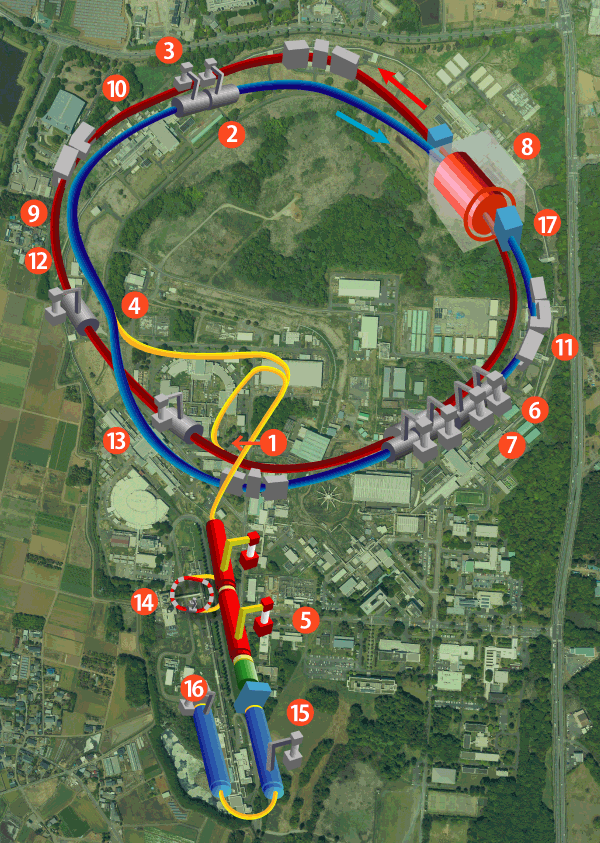KEKB accelerator
Purpose and Vision
KEKB is an electron-positron collider aimed at experimental verification of the Kobayashi-Maskawa theory of CP-violation. It has achieved the world-highest luminosity, 2.1 x 1034cm-2s-1 and brought 2008 Nobel Prize in Physics to Kobayashi and Maskawa.
Summary
KEKB is a double-ring electron-positron collider with asymmetric energies. It collides 3.5 GeV positrons and 8 GeV electrons at the interaction point, where the beams are focused to a very small beam sizes around 150 μm x 1 μm (horizontal x vertical). Very high currents, 1.7 A / 1.4 A, are stored in the postron / electron rings, and maintained nearly constant by a top-up injection from the Linac during the collision experiment.
KEKB started its operation in 1998, and reached its design luminosity, 1 x 1034cm-2s-1 in 2003, as the first machine to break the world-historical order. A number of new technologies were developed to achieve the luminosity, such as Accelerator Resonant Storage damped RF cavity (ARES), a superconducting damped cavity, a radiation/background-free interaction region with a large crossing angle, horizontal 2.5π lattice with non-interleaved sextupoles, a local chromaticity correction system, bunch-by-bunch feedback system, electron-cloud suppressing solenoids, low-impedance movable collimators, worlds’ largest EPICS accelerator control system, etc. Even a challenging device Crab Cavity was introduced in 2007 hoping a further boost in the luminosity.
KEKB concluded its operation in June 2010 to start the upgrade for SuperKEKB.
Related facilities
KEKB Ring


